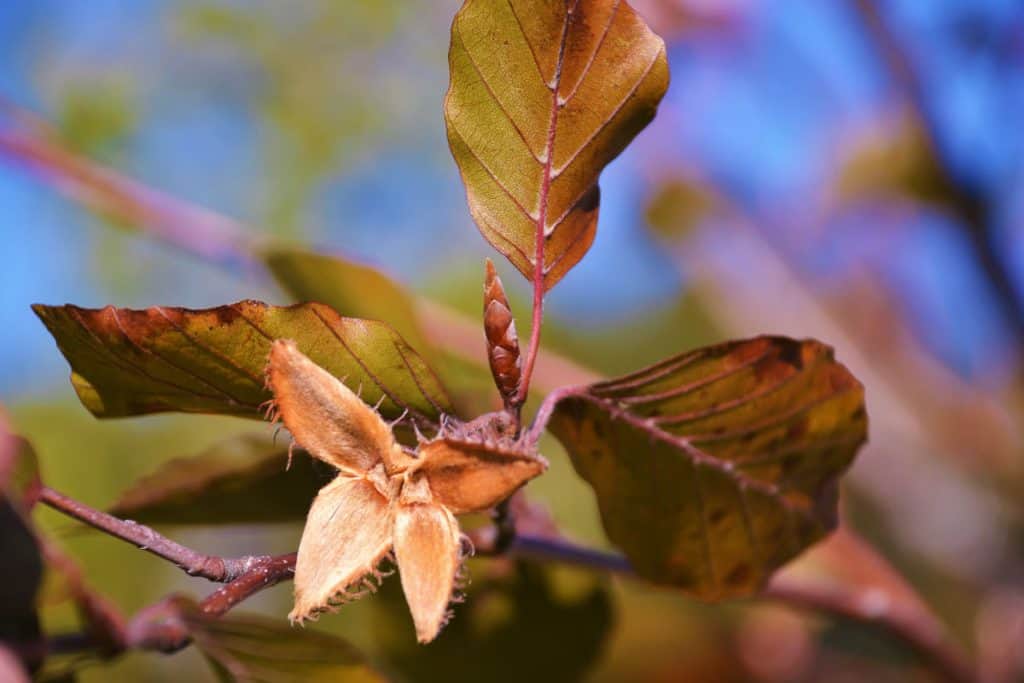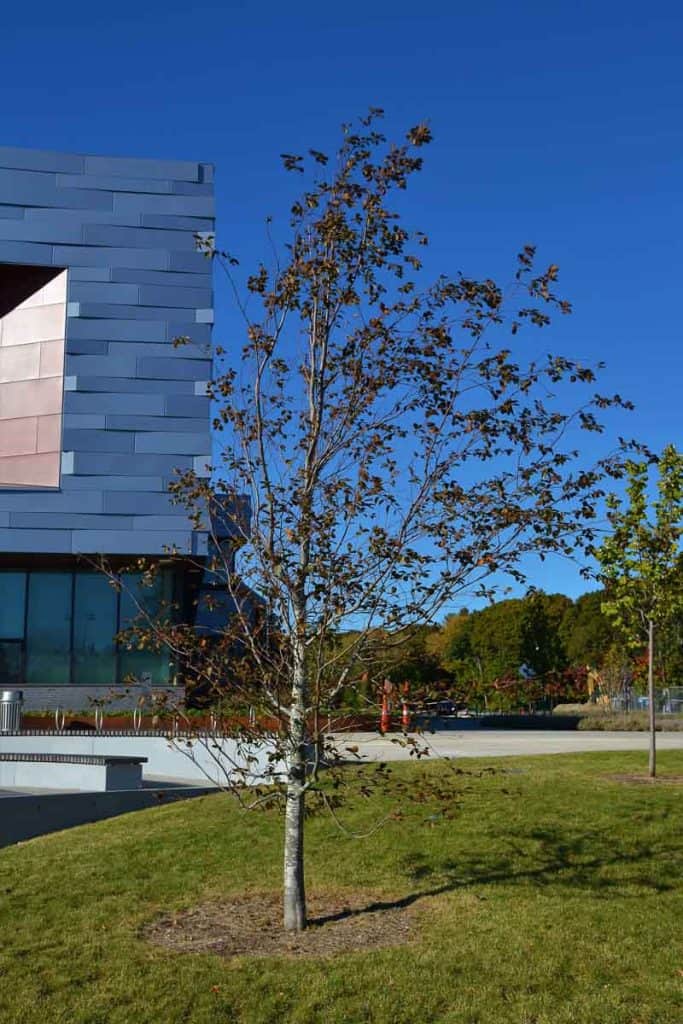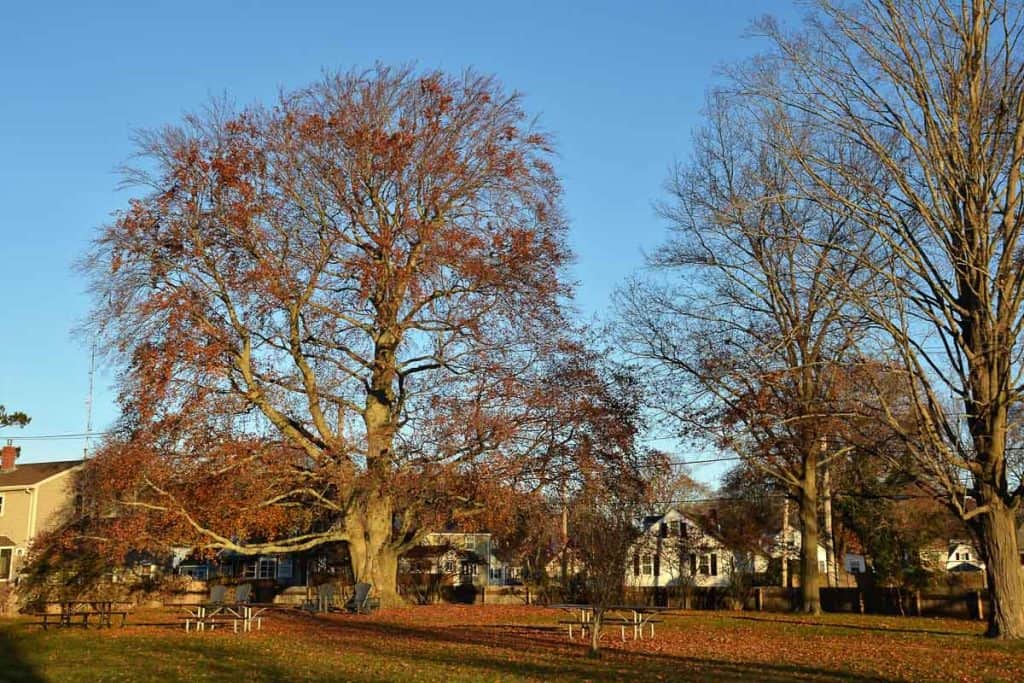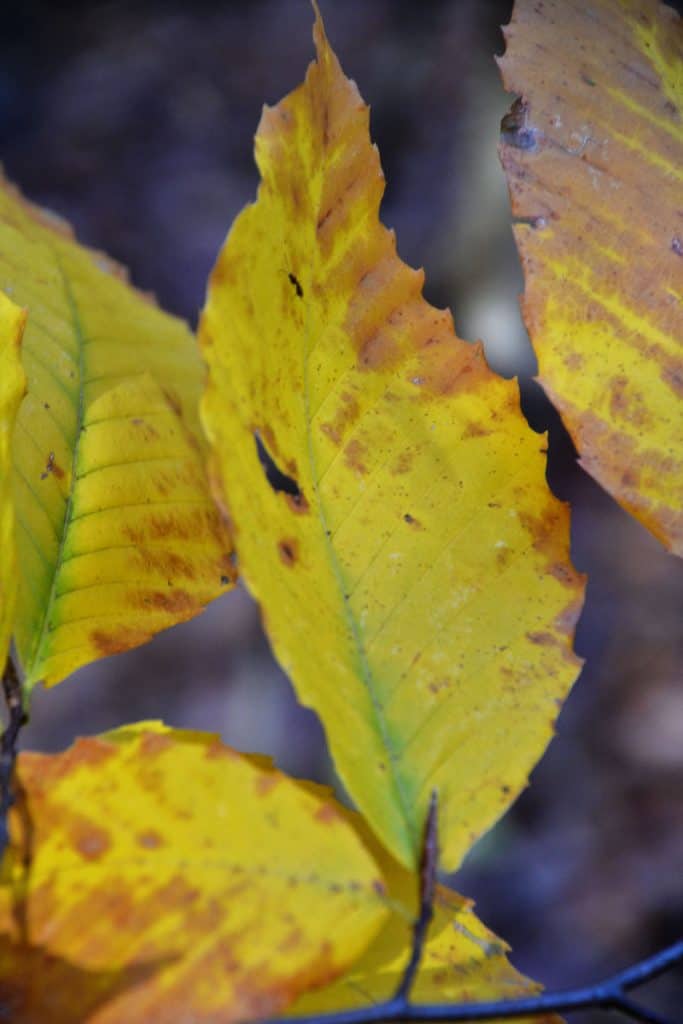Here’s what’s blooming in town this week to make your walks more enjoyable
Among the last deciduous trees to let go of their leaves are the beeches. We have some majestic examples of both European beech (Fagus sylvatica) and American beech (Fagus grandifolia) in Saugus. American beech trees grow wild in the woods at Breakheart Reservation, while the European species is usually planted as a solitary specimen in gardens. Fairly slow to grow, neither beech is an “instant gratification” plant, but they are both quite rewarding and elegant when mature.
The large beech at the Saugus Iron Works was once an ornamental tree in the yard of a house on Central Street – then, when the road was changed because of the archeological discoveries in the early 1950’s, the tree remained on what is now the upper lawn area of the Saugus Iron Works National Historic Site. This tree is a purple foliaged variety of European beech (Fagus sylvatica). During most of the growing season, the leaves are a dark reddish purple, but as November arrives the leaves become lighter greenish for a brief period and then somewhat yellow before they join the maple foliage on the lawn. Anna Spencer, who oversees the grounds maintenance, says this is her favorite plant on the Saugus Iron Works property, and many visitors would certainly agree. The Adirondack chairs under the spreading branches get a lot of use, especially in the summer, when the dark foliage makes the space beneath the tree significantly cooler than sunny portions of the lawn. There is also a picnic table in the tree’s shade where I frequently see people sitting at various times of the year. Even in winter, this tree is outstanding for its shape and its gray bark, which reminds many people of an elephant. In fall you may be finding beechnuts, or their spiny husks, around the base of the tree, where the small nuts provide food to help sustain wildlife through the winter.
European beech trees became very popular in American gardens in the 19th century. Currently they are not easy to find in nurseries, but Saugus can brag of a new young purple European beech at the new middle-high school – it is near the amphitheater on the high school side of the new middle-high school building. Being young, it doesn’t have the dramatic size and shape of the older trees, but it is mature enough to have produced a few nuts this fall, and it is inspiring to see this young tree at the school when you are familiar with older specimens around town.
Elsewhere in Saugus European beeches are more likely to be found near Victorian houses than in more recently built neighborhoods. One extends its branches over the little free library on Lincoln Avenue in East Saugus, and both green leafed and purple leafed varieties can also be seen here and there in other parts of town. The most famous European beech in Massachusetts was probably the Prince of Wales beech at Mt. Auburn Cemetery, which lived over 140 years but was removed in 2011 due to disease. It was ceremonially planted during a visit to North America in 1860 by Queen Victoria’s eldest son, who later became King Edward VII.
American beech (Fagus grandifolia) is fairly common in Breakheart Reservation. The foliage during the summer on this species is green, but in November the leaves turn a golden color, sometimes changing to caramel, before falling for winter. Both beech species can be easily identified in winter by their long, narrow buds, although our native tree has more elongated buds than the European species. The gray bark also helps to identify a beech. Beech bark remains relatively smooth even in old age and does not develop deep furrows as many other tree species do.
As cold weather draws the growing season to a close, there is still plenty to celebrate in the landscape. Hannukah this week has been greeted with lights in many homes, and tonight will see the lighting of many trees in Saugus Center and Christmas decorations popping up at homes and businesses in town. There are still flowers blooming in some gardens, and when I stopped at the Iron Works this afternoon a robin perched in a leafless tree was singing.
Editor’s Note: Laura Eisener is a landscape design consultant who helps homeowners with landscape design, plant selection and placement of trees and shrubs, as well as perennials. She is a member of the Saugus Garden Club and offered to write a series of articles about “what’s blooming in town” shortly after the outbreak of the COVID-19 pandemic. She was inspired after seeing so many people taking up walking.







